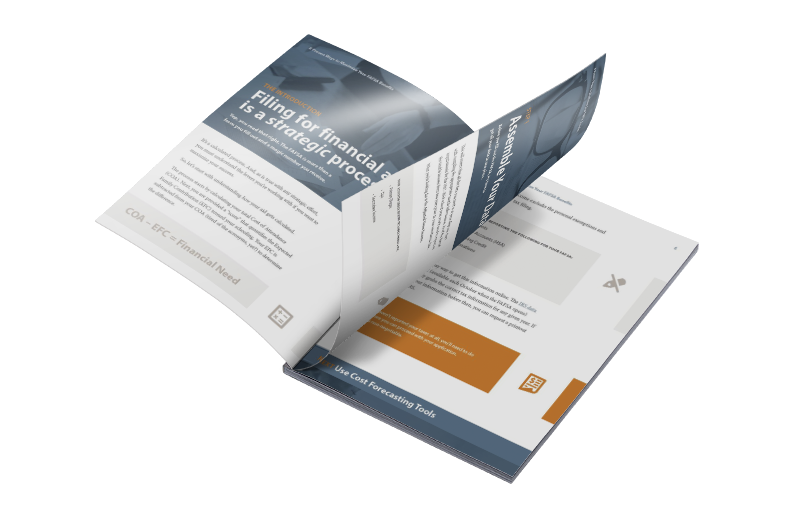Request Information
We're Sorry
There was an unexpected error with the form (your web browser was unable to retrieve some required data from our servers). This kind of error may occur if you have temporarily lost your internet connection. If you're able to verify that your internet connection is stable and the error persists, the Franklin University Help Desk is available to assist you at helpdesk@franklin.edu, 614.947.6682 (local), or 1.866.435.7006 (toll free).
Just a moment while we process your submission.

The Best Colleges Near Columbus, Ohio for Adult and Online Students
Over the past decade, one of the biggest changes we’ve seen in higher education is the growth of adult learning. That trend is especially true in and around Columbus Ohio—where the growth of programs aimed at adults has grown exponentially.
Now, more than ever, there are schools in the Columbus and central Ohio region promising high-value degrees to adults who want to go back to school. How do you know where to invest your time and money? What’s the best Columbus college for adult and online students?
Let us break it down for you.
Comparing the Top Colleges in Central Ohio for Non-Traditional Students
Feeling overwhelmed by the choices in Ohio? Don’t stress. We’ve done the heavy lifting for you by compiling a comparative list of Columbus, Ohio area colleges in an easy-to-digest comparison.
How We Ranked Columbus Colleges
There are several ways to rank and compare colleges against one another.
We choose to rank Columbus 4-year colleges using the metrics that matter most to busy adults who are going back to school. Whether completing a bachelor’s program or a graduate degree, adult students tend to have unique criteria when looking for a school.
With that in mind, our methodology focused on the following metrics:
- Student Demographics & Adult Friendliness
- Non-Profit vs. For-Profit Status
- Undergraduate Tuition Price
- # of Degrees Offered & Completed 100% Online
Who Made the List (and Who Didn’t)
We considered schools within 30 miles of downtown Columbus. For this list, we focused on schools that offer bachelor’s programs and above.
We left out a variety of smaller schools that cater to a specific type of student. These include 2-year schools and colleges or universities that specialize in theater or the arts, singular vocations, or religious training. Here’s a snapshot of who didn’t make the cut:
- Chamberlain University
- Columbus State Community College
- Columbus College of Art & Design
- Mount Carmel College of Nursing
- Hondros College
- Trinity Lutheran Seminary
- Pontifical College Josephinum
In the end, we were left with 9 Columbus, Ohio, schools that offer bachelor’s, master’s and doctoral degrees. We made note of the essential differentiators adult students should consider when choosing an online program.
| Non-Profit | % Undergrad Over 25 | Undergrad Tuition & Fees | # Bachelor's Degrees Online (1) | |
|---|---|---|---|---|
| Capital University | Yes | 13% | $34,600 | 0 |
| Devry University | No | 72% | $17,476 | 8 |
| Franklin University | Yes | 81% | $12,241 | 32 |
| Ohio Christian University | Yes | 65% | $20,240 | 12 |
| Ohio Dominican University | Yes | 26% | $31,080 | 3 |
| Ohio Wesleyan | Yes | 5% | $44,690 | 0 |
| Otterbein University | Yes | 1% | $31,874 | 0 |
| The Ohio State University | Yes | 7% | $10,592 | 2 |
The Winner for Adult & Online Students: Franklin University(1) Reflects number of bachelor's programs that were offered and completed 100% online. Sources: National Center For Education Statistics 2016-2017, US News & World Report & Individual School websites
Franklin University is designed for today’s adult student. Unlike traditional universities that offer online options as alternative programs, Franklin structures the entire learning experience around the busy adult lifestyle and professional or personal goals.
According to the Institute of Education Sciences (an independent research arm of the Department of Education), Franklin’s enrollment is comprised of 32% full-time and 68% part-time students. 59 online degrees are offered. Finally, average tuition and fees for a full-time undergraduate student totals $12,241.
Why Franklin University
- Offers 59 online degrees—more degrees across the bachelor’s, master’s, and doctoral levels than any Columbus, Ohio online college
- Non-profit
- Offers 100% online options
- Provides evening courses
- 68% of undergraduate students are enrolled part-time
- First in number of online bachelor’s degrees offered
- First in percentage of adult students
- No hidden application or student fees
- Curriculum informed by real business and industry leaders
- 90% of Franklin students seamlessly transfer credits from other accredited institutions
- May award transfer credit for related life or work experience
- Special resources, such as course resources available right from the online course environment
The Cons for the Adult & Online Student
- Not the cheapest online program in Ohio—but still one of the most affordable options out of the 9 colleges surveyed
Have more questions about earning your degree? Use this form to request free information about Franklin - it's quick and easy!
Reviewing the Runners Up
Let’s take an in-depth look at the pros and cons of each Columbus program offering online degrees. All information below was acquired through the U.S News and World Report as well as the National Center For Education Statistics (NCES) and individual school websites.
Capital University
Home to approximately 2,500+ students, Capital University provides a traditional college experience in a close-to-downtown setting. Located in Bexley Ohio, Capital University offers more than 60 undergraduate degree options.
The Pros
- 65% of classes have fewer than 20 students
- Located close to downtown Columbus
The Cons for the Adult and Online Student
- Second highest undergraduate tuition among Columbus colleges
- No 100% online bachelor’s completions or online graduate degree programs
- Graduate programs require in-person attendance
- Only 8% of undergrad students are enrolled part time
- Majority of student body are traditional students under the age of 25
DeVry University
Founded in 1931, DeVry University is a 4-year, private, for-profit school. They have a student population of 1,635 (1,304 undergraduate). Enrollment is comprised of 40% full-time and 60% part-time students. 12 bachelor’s, 8 master’s, and 0 web-based doctoral degrees are offered. Finally, average tuition and fees for a full-time undergraduate student totals $17,476.
The Pros
- 60% of students are enrolled part time
The Cons for the Adult & Online Student
- For-profit organization
- 3rd most expensive Columbus college at $17,476 in annual tuition
- Worst student-to-faculty ratio at 23 to 1
Ohio Christian University
A private institution, Ohio Christian University is located in rural Circleville Ohio. The school was founded in 1948 and has approximately 4,200 undergraduate students enrolled today. Enrollment is comprised of 61% full-time and 39% part-time students. 65% of the student population is above the age of 25.
The Pros
- Several 100% online bachelor’s available
- Small student to faculty ratio
The Cons for the Adult and Online Student
- Substantial commute from Columbus for on-campus services
- Small alumni network
Ohio Dominican University
Founded in 1911, Ohio Dominican University is a 4-year, private, nonprofit school. They have a student population of 2,406 (1,796 undergraduate). Enrollment is comprised of 58% full-time and 42% part-time students. 5 online degrees are offered, 4 bachelor’s, 1 master’s, and 0 doctoral degrees. Finally, average tuition and fees for a full-time undergraduate student total $31,080.
The Pros
- Low student-to-faculty ratio of 13 to 1
- Nonprofit
The Cons for the Adult and Online Student
- The fourth-most expensive college on our shortlist at $31,080 in annual tuition
- Only 3 bachelor's degree programs completed 100% online
Ohio Wesleyan University
A private Christian liberal arts college, Ohio Wesleyan University is located in Delaware Ohio. Founded in 1842, the school offers programs covering the arts, social sciences, humanities and natural sciences. The most popular majors at the school include business management, psychology, and visual and performing arts. The school boasts a total of 141 full-time faculty.
The Pros:
- Very low student to faculty ratio at 9 to 1
The Cons for the Adult and Online Student:
- No online bachelor’s or online graduate degree programs
- Only 1% of undergrad students are over the age of 25
- Most expensive undergrad tuition in the shortlist of schools
- Only offer bachelor’s programs
Otterbein University
Founded in 1847, Otterbein University is a private school located in Westerville, Ohio. 93% of the 2,485 undergrad students are enrolled full-time. 76% of the student population is Caucasian. The school boasts a sprawling 140-acre campus and a hefty endowment from alumni and donors. 64% of classes have fewer than 20 students.
The Pros
- 89% of graduate students are enrolled part time
- 88% of undergraduate students receive a grant or scholarship aid
The Cons for the Adult and Online Student
- Only 3% of undergraduate students are enrolled part time
- Few online programs offered
- 95% of undergrad students are 25 and under
- Among the most expensive undergraduate programs in central Ohio
The Ohio State University
Founded in 1870, The Ohio State University is a 4-year, public school. They have a student population of 59,482 (45,831 undergraduate). Enrollment is comprised of 91% full-time and 9% part-time students. 18 online degrees are offered, 3 bachelor’s, 15 master’s, and 0 doctoral degrees online. Finally, average annual tuition and fees for a full-time undergraduate student totals $10,592.
The Pros
- Larger size affords students with a greater variety of courses and degrees offered.
- 18 degrees completed 100% online
- Strong alumni network
- 2nd most affordable school in shortlist with an average $10,592 annual tuition
The Cons for the Adult and Online Student
- 93% of students are under the age of 24
- Student-to-faculty ratio is poor at 19 to 1
- Only 9% of students are part time
Now What?
It’s important to consider all pros and cons in tandem to each respective program and not to allow yourself to be dazzled by one aspect of a particular school. That’s why we’ve compiled a thorough, full-picture view of what each institution can (and can’t) offer. Selecting a program that isn’t too expensive, has a good mix of full-time and part-time students, a lower student-to-faculty ratio, and a wide range of degree choices is important.
Also, be sure to consider the college’s policy on transfer credit and if they offer any special resources for distance learning students. You don’t want to pay for a course and find out that the online interface is difficult to use or that there is little to no technical support.
Ultimately, your personal goals, budget, and employment status should be considered to help you determine which online degree program is right for you.
Good luck!





